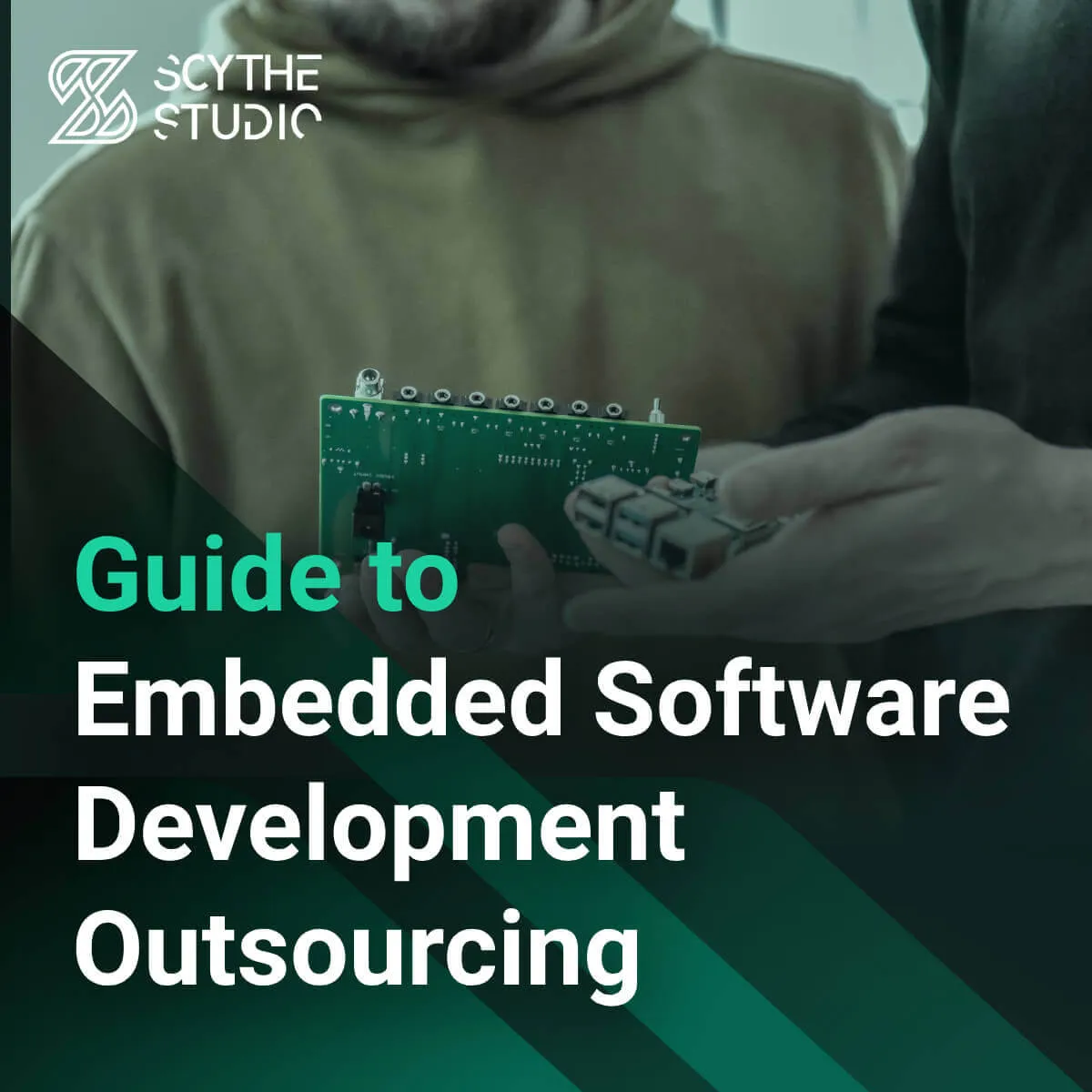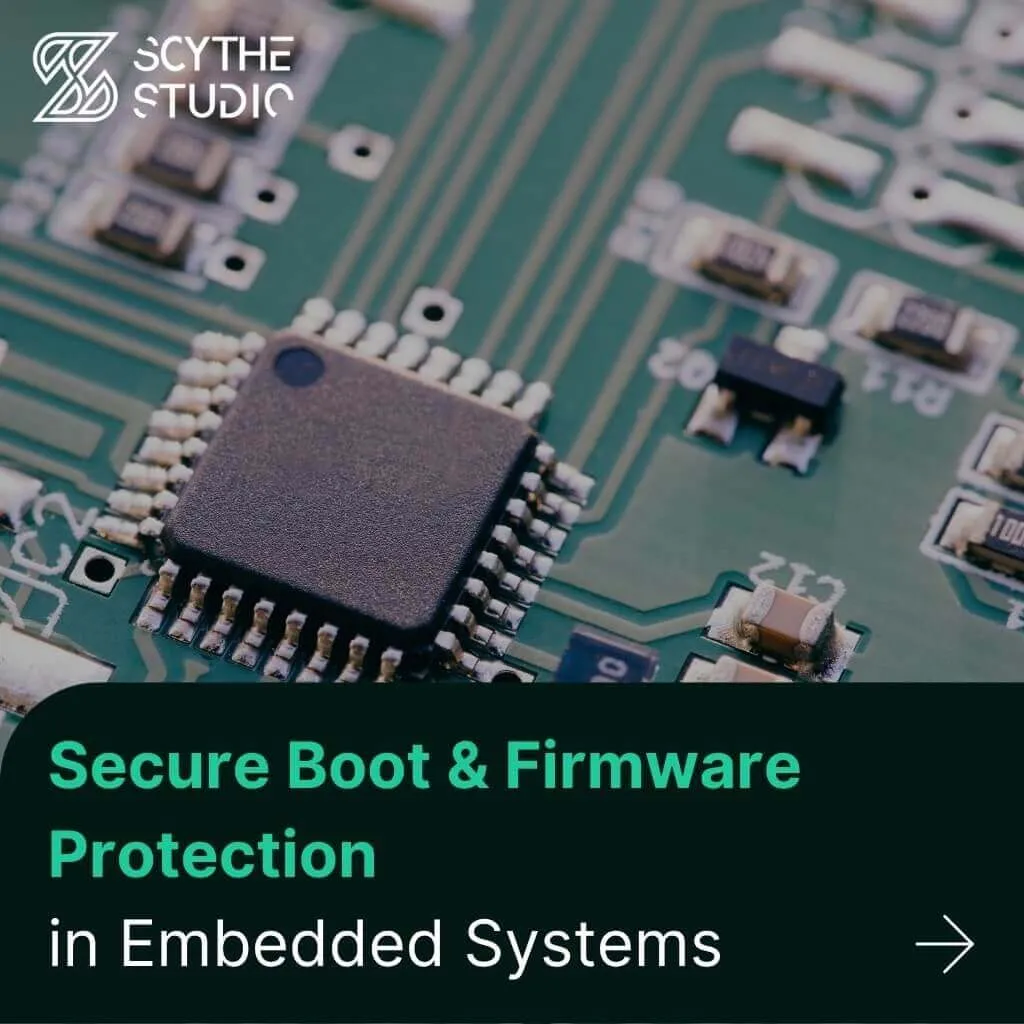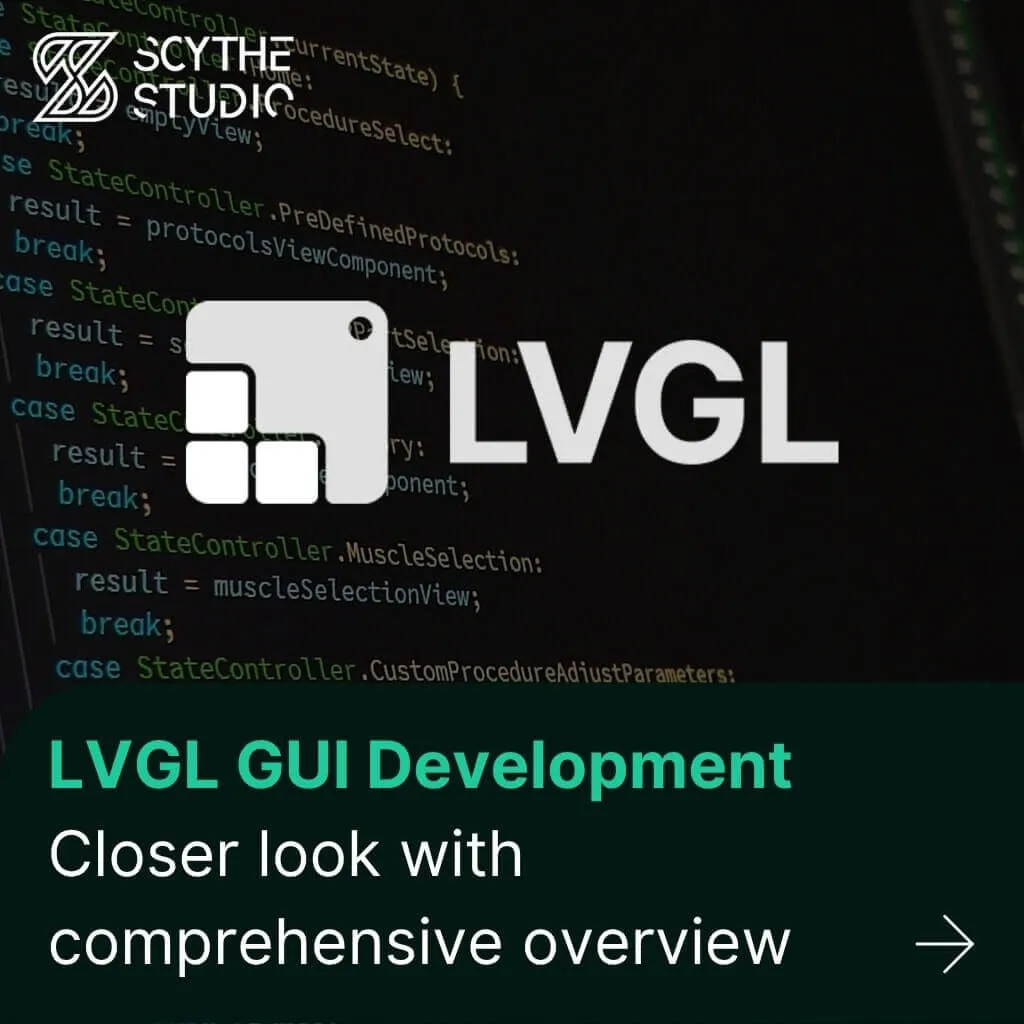
How to use Qt WebAssembly – The Complete Guide with demo
Hey, welcome back to another blog post. Today we’re going to talk about the new Qt WebAssembly. This post will […]
Join us at Qt C++ Warsaw Meetup - 21.08.2025
Sign up for free!
Outsourcing embedded systems development has become an increasingly popular strategy for businesses looking to enhance efficiency, reduce costs, and leverage cutting-edge expertise.
In this guide, I will walk you through the ins and outs of embedded software outsourcing, showing you its benefits, potential challenges, and strategies to ensure your success. Check out our services offering (top menu :)) to learn more about our expertise and how you can benefit from access to Scythe’s consultants.
Embedded software outsourcing refers to the practice of partnering with external vendors to develop software that runs on embedded systems. These systems are specialized computer programs designed to perform specific tasks within hardware devices, like:
By outsourcing this development, businesses gain access to specialized skills, technologies, and resources without the need to build in-house expertise.
 Ideal Embedded Software Development Outsourcing Vendor
Ideal Embedded Software Development Outsourcing Vendor
Once upon a time, we published an article titled “Outsourcing vs Hiring Software Developers”. You can find there a comprehensive guide on whether to hire or go with software outsourcing. Everything written there is of course also applicable to embedded software projects.
Developing embedded systems demands niche, rare skills, such as:
Such expertise can be hard to find and expensive to build in-house. Outsourcing offers immediate access to skilled professionals, such as embedded software engineers and software and hardware developers with proven track records in these areas, ensuring your project is built on a strong foundation.
Professional embedded software development company like us, often have access to people with various skills who can help you build an embedded system at various stages of the development phase. At Scythe we have people who are great at requirements engineering and hardware components prototyping, but also consultants that you would need to release your project to the market. Like UX/UI designers, project managers, embedded software engineers, or regulatory specialists.
Business needs are dynamic and can shift rapidly. Outsourcing provides a unique level of scalability that is difficult to achieve internally:
Moreover, leveraging a remote embedded team introduces additional flexibility, allowing for streamlined adaptation to changing demands without disrupting internal workflows
The financial benefits of outsourcing are substantial and multifaceted. Companies not only save on salaries, but they also avoid expenses associated with:
So at first glance if you get an offer from an embedded software outsourcing company it might look like they charge a lot for manhours, but if you add all the costs it might look more beneficial to you than hiring.
However, remember that price shouldn’t be the main factor that you take into consideration while thinking about embedded software outsourcing provider. Such a company will be your partner for a long time, so you should focus on quality and their ability to deliver rather than price. A nice way to verify this is by taking a look at the company’s cases and certificates. Scythe Studio is an ISO 9001:2015 and ISO 13485:2016 certified company partnering with top companies like Qt Group.
Speed is critical in competitive industries, and outsourcing plays a pivotal role in accelerating development timelines. By partnering with an experienced external team, businesses can:
This approach ensures that your product reaches the market faster, and embedded technology guarantees efficient and high-quality delivery at every stage of the process.
Outsourcing relieves your team from the burdens of managing complex technical development processes. This shift enables your organization to:
By delegating embedded software development to external experts, companies can channel their internal energy into achieving growth and strategic goals.
Cooperation and using embedded software outsourcing services doesn’t always go well. Before you wonder what to do about a supplier who doesn’t deliver, figure out in advance what problems can happen and how to remedy them.
Collaboration with an external team, particularly one located in a different country or time zone, can be challenging. Misaligned expectations, cultural differences, or unclear instructions may lead to delays or errors.
If you’re based in Europe you can think about nearshoring, so embedded development outsourcing to companies that are close to you geographically. All of our embedded engineers are from Poland, so we’re often contracted by customers from Germany, Benelux, or Scandinavia as it’s beneficial from their perspective.
establish regular meeting dates, and time windows for joint work. Your partner should assign someone responsible for project management.
From my observations, the software world is dramatically begging for quality. Especially in embedded systems development. Ensuring high-quality deliverables through diligent supervision is time-consuming and expensive. Of course, you have to hold your embedded software outsourcing partner accountable all the time, but first you have to build trust between teams.
And there is no room for trust if your embedded development partner can’t brag about the interesting projects it has completed in the past. Ask them again then for their case studies, partnerships, ISO certificates, industry-specific experience, and referrals.
How else can you ensure quality? Make sure that the team working on your embedded systems follows market standards like code review, thorough testing, detailed documentation, and integrating CI/CD setup.
IP protection of your embedded solutions is one of the most significant concerns when outsourcing. If proper agreements and safeguards are not in place, there’s a risk that proprietary technology or ideas could be shared, reused, or misappropriated by the outsourcing partner. Addressing IP concerns upfront ensures you retain ownership and control of your innovations.
At Scythe, the transfer of Intellectual Property rights to the customer is one of the fixtures in our contracts.
Embedded software doesn’t operate in isolation—it must work seamlessly with other devices, your existing hardware components, software, and systems. Poor coordination between internal and external teams can lead to integration challenges, potentially delaying deployment. Close collaboration and alignment between the two sides are necessary to overcome this hurdle.
 Steps to verify Embedded System Development Vendor
Steps to verify Embedded System Development Vendor
Selecting the right outsourcing partner is crucial to the success of your embedded software project. A good partner not only brings technical expertise but also aligns with your business needs, understands your industry, and provides reliable collaboration. Below is a breakdown of the essential factors to consider when making your decision:
| Criteria | What to look for |
|---|---|
| Check Technical Expertise | The foundation of any outsourcing decision should be the technical skills of the provider. Evaluate their proficiency in embedded software development, particularly in areas like firmware, hardware interfacing, and system optimization. Partners with experience in microprocessor and microcontroller architectures or complex domains such as IoT or medical are better positioned to handle challenging projects. |
| Check industry experience | While technical expertise is essential, industry-specific experience can make a significant difference. An outsourcing partner who understands the nuances of your industry will be better equipped to address regulatory compliance, standards, and unique challenges, ensuring smoother project execution. One of the areas in which we have the most experience is Medical Devices Software Development. |
| Ensure Standards Compliance | A trusted partner will demonstrate strong security protocols and compliance with relevant international standards tailored to the project’s needs. For instance, ISO 13485 is essential for medical device projects, ensuring quality management specific to this sector, while ISO 9001 offers a general framework for maintaining consistent quality across industries. Additionally, standards like GDPR, EU CRA, or other domain-specific regulations may apply. |
| Check Delivery and Collaboration Models | Every outsourcing provider has a preferred way of working. Whether they follow Agile, Waterfall, or hybrid methodologies, ensure their model aligns with your team’s workflow. Additionally, assess their ability to collaborate effectively through tools, reporting structures, and regular updates. |
| Check Case Studies and Client Feedback | Case studies and references provide valuable insights into a provider’s capabilities and reliability. Reviewing past projects, especially in your industry, helps you gauge their success rate and ability to deliver high-quality work on time. |
Here I will shortly explain two cases on how our customers benefited from using our embedded software development services. If you want to see more, check out our portfolio.
One of our customers has been developing embedded solutions for their own luxury, electronic vehicle that needed embedded software and GUI written with Qt framework – our main area of expertise.
 Automotive Embedded Software
Automotive Embedded Software
We partner together with a Swiss-based startup on their wearable gym device that you can put on both your wrists and ankles. The solution consists of multiple sensors and a microcontroller with custom embedded software being developed by us.
 Wearable Embedded Software
Wearable Embedded Software
If you’re looking for an outsourcing embedded software development partner, Scythe Studio is the partner you can count on. We’re a Europe-based team working globally, with serious skills in C/C++, Qt Rust, LVGL, Yocto, Buildroot, and more. From medical devices to IoT and industrial automation, we tackle tough projects with speed and precision.
Our expertise in C++, Qt, and QML means we create cross-platform software that saves you time and money. Plus, our ISO certifications prove we’re all about quality and safety. Whether you’ve got tight deadlines or need niche tech pros, we’ll jump in fast and make your project a success.
Let's face it? It is a challenge to get top Qt QML developers on board. Help yourself and start the collaboration with Scythe Studio - real experts in Qt C++ framework.
Discover our capabilities
Hey, welcome back to another blog post. Today we’re going to talk about the new Qt WebAssembly. This post will […]

Users of embedded devices – from industrial controllers to consumer electronics – are often unaware of hidden vulnerabilities that threaten […]

Graphical user interfaces (GUIs) are becoming more and more important in embedded devices – from home appliances to medical equipment […]